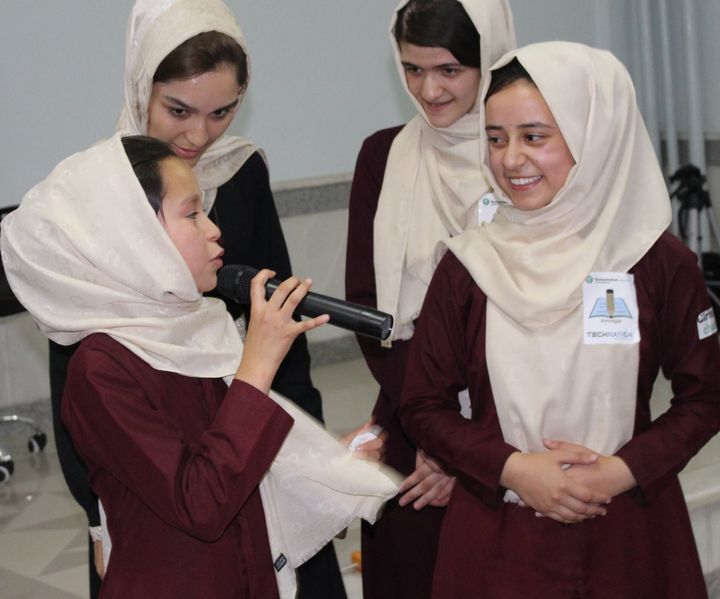We are living in an unusual age.
Firstly, the world has an unusually large number of young people. 60% of the world right now is under the age of 35. And for the first time in 3 years, the unemployment rate for youth is going to rise.
Secondly, this is the age of accelerations, when mobile technology and online, social platforms can rapidly enlarge fissures and disrupt whole societies.
Fourthly, there is a big disconnect between what young people want and can access. For instance in a survey with 7000 youth across 32 countries, Citi Foundation found that 86% of youth in developing countries dreamed of becoming an entrepreneur but didn’t feel that they had access to the right resources or could achieve their dreams.
Thinking about these potentially interconnected factors has economists worried about increased social unrest at a global level.
Can we save a young, hot, angry planet from self-destruction?
The answer lies in understanding how technology can be used for creative purposes. The same technology that is easily deployed to rouse nations (and also distract and entertain us), cannot be used to educate, create and innovate. The method and speed of diffusion of these two endeavors are very different.
We have to go a layer deeper. The answers lie in understanding that we are social animals. We crave attention and social approval. If someone we respect tells us to do something, we most likely will - to win their approval. This means that although learning can be online, it has to be grounded in real-world, social networks that enable a learner to experience real physiological emotions. It means that learning on a blackboard cannot just be simply substituted by learning on an ipad through a recorded video or “adaptive tutor”, but rather, learning has to be project-based, team-based, global, cutting across the boundary lines of nations, and deeply social. Technology can play the critical (and irreplaceable) role of bringing together like-minded people from different countries and across conflict lines.
But it does mean that ed-tech innovators and entrepreneurs need to think more boldly and long-term about developing truly innovative learning technologies, and not just create systems that merely enable students to do better on tests. We have been steadily improving our ability to do better on tests. Instead of deploying big data sets and our smartest algorithms to help students do better on tests, we need to turn our attention to figuring out how technology can be used to increase curiosity, creativity, collaboration and communication abilities - the stuff innovation is truly made of!
Some concrete steps to take would be as follows:
- Teacher Training. Develop and deploy a large scale, online, open-source comprehensive teacher training that supports teachers to provide collaborative, real-world, project based learning experiences to their students.
- Curriculum. Develop and deploy an online, open-source, project-based, collaborative primary and secondary level curriculum, focusing on engineering and technology (fields that drive economic growth). The curriculum should specifically prepare students to tackle large, global issues such as poverty, climate change, hunger, malnutrition, access to clean water, etc.
- Technology. Develop a technology that provides personalized feedback and guidance to each student as they progress through a physical project. Initially this could be a mobile technology, but eventually it could be AI/VR (artificial intelligence/virtual reality) based as they become cheaper and more accessible. The key point here is that the content should not just be test-based with multiple-choice questions, but rather should help students develop key 21st century character traits such as perseverance by dealing with real-world materials and real-world failures that require significant debugging.
- Parent Training. Develop a comprehensive training for parents that makes them more aware of the importance of early learning as well as educating girls. This training should be delivered through mobile technologies. Both the teacher and parent training as well as the student curriculum would have to be localized for each region and the task can be shouldered by wikipedia-style volunteers.
Is this too much to take on?
I think not. We already have some examples to look at. Take for example this group of young girls from Palestine. These girls have grown up in the Gaza Strip, surrounded by conflict their entire lives. As a result of this conflict there are tens of thousands of disabled Palestinians. In addition, one of the girls is a young Palestinian woman with a disability. The girls came together to do something about these issues. They formed a team and called themselves the Stand outs. They found an online program, Technovation, that taught them how to code a mobile app and launch a startup. They developed a mobile app, Ability, to connect disabled Palestinians in the Gaza Strip with resources they need such as mental health care, access to psychologists as well as stories of people who overcame similar hardships.
Another example of brave young girls (Team Movaffaqiat) solving hard problems with technology is from Afghanistan. They created an app to teach all members of society, and especially women, how to drive and get familiarized with the driving regulations!

Although these are isolated examples of success, they are still instructive because they show that young people all over the world are hungry for challenges, and are very capable of becoming innovators and entrepreneurs.
There is a choice. We can either wait for revolutions to disrupt our world, or unleash amazing young innovators who will make the world a better place for us all.
